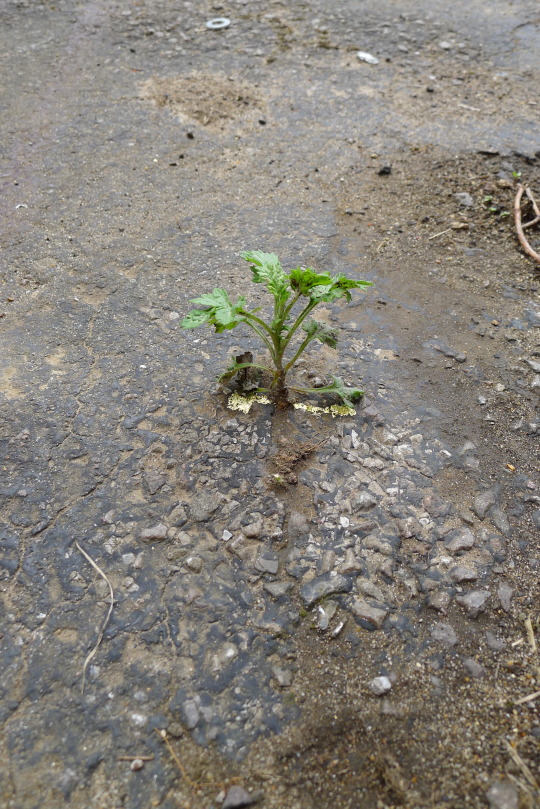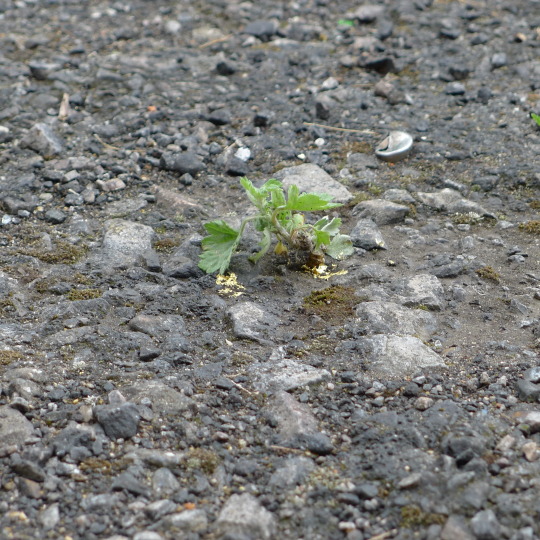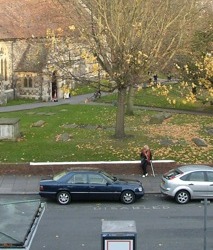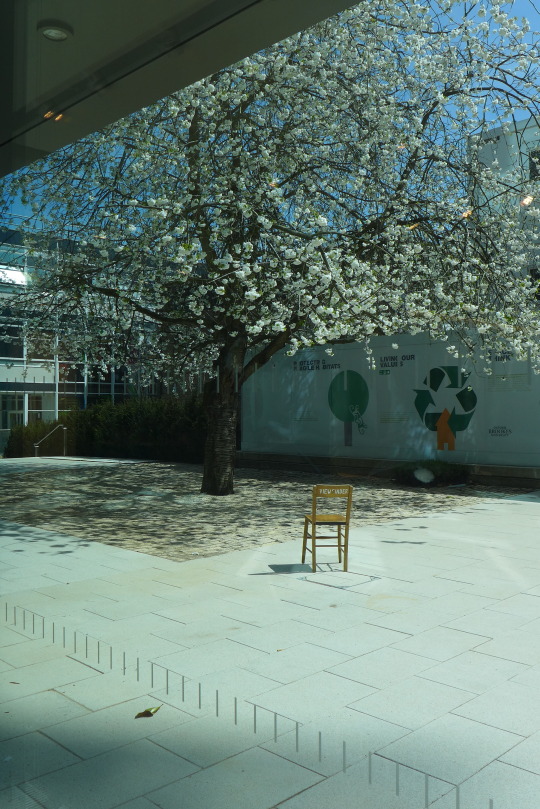Photo

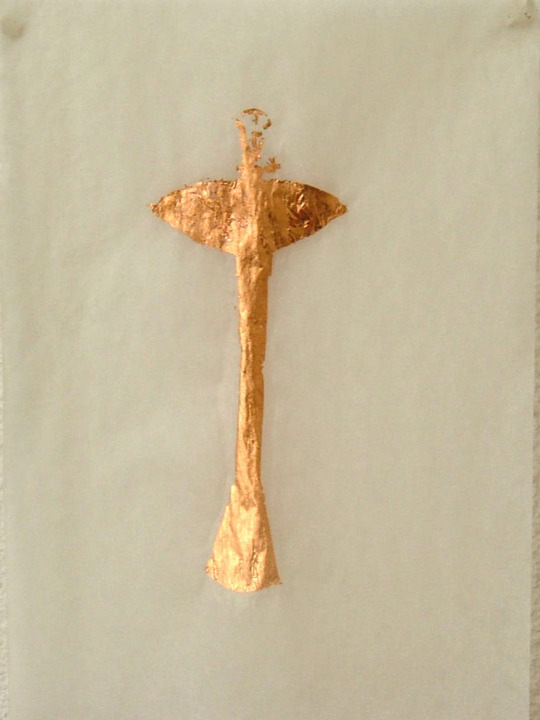

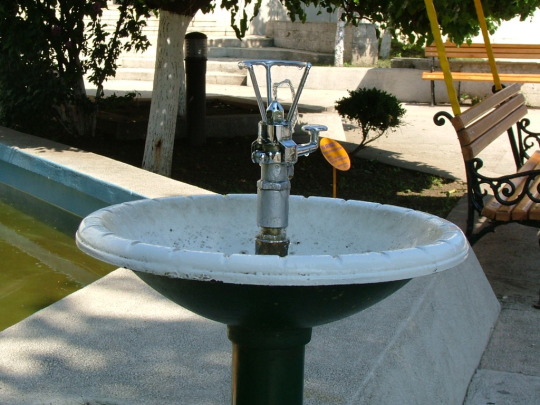


The Fountains of Constanta, 2005
Where there is laughter
Where he fills a bottle
Where he rinses his hands
Where there is a brick to help children reach
Where the girl collects water
Where the boys play football
Where the water runs freely
Where they play chess in the evening
Where he splashes his friend Where we drink.
The Fountains of Constanta, 2005 part of Urbanitas at the Museum of Art, Constanta, Romania.I spent my time in Constanta walking through the town not understanding the languages spoken around me, feeling invisible and simultaneously highly visible, a stranger looking for sweet water. I watched people using the drinking fountains as part of daily life. The ancient springs and wells in Oxford I had been researching were mostly dry, in those still wet the water is blocked or foul. The fountains of Constanta flow on the streets and parks where people gather, spend time, laugh and drink. Each evening I would draw the shape of one of the fountains. Constanta has no wells, springs or even a river running through the city. The importance of the town as a port on the Black Sea emphasised by its’ very existence. A canal from the Danube was built to the south of the city in the early C20th. The Romans piped drinking water through aquaducts from a well far beyond the city. Local lakes are saltier than the sea.
1 note
·
View note
Photo


Small islands: the hidden mandalas of town planners and other inhabited roundabouts.
There are houses on roundabouts designed so that all the gardens taper towards the middle and look like slices of cake. Others roundabouts have been shaped over centuries. Roads cut to slice through communities and create small urban islands. These islands are all located in the south of england and found through searching through old maps, google earth and wandering. I am fascinated by the division of land and placement of buildings on roundabouts.
This is a slow growing collection of roundabout mandalas.
EX33 Homer Crescent
RG6 Shepherds Hill
RG2 Ashburton Road
SO15 Pirrie Close
1 note
·
View note
Photo







The Imagining Path invites you to journey into the Wychwood. Wychwood is a last remnant of ancient forest in Britain. There is a tradition of entering this Secret Forest on Palm Sunday and walking to Chalybeate Spring where the iron rich chalybeate water is collected alongside fire wood. This water is mixed with peppermint, liquorice and sugar to make Spanish Liquor a cure all for people and livestock. The public were denied access to these woods apart from on Palm Sunday. Within living memory the path was lined with game keepers with guns as people entered into the forest on Palm Sunday. Public pressure in the 1990’s lead to a public footpath that passes through the forest though not to the springs.
We walked to the springs and made Spanish Liquor on Palm Sunday April 9th 2017
The Imagining Path invites you to journey into the forest.
The Imagining Path is part of Everyday Cure Alls developed for Festal Favors
A series of images, reflections, actions, collected stories, recipes, concoctions and conversations as well as walk to the spring with others. Oxfordshire in 2017.
Curator : Clare Northen
#festalfavors
#Cornbury
#Charlbury
0 notes
Photo


Hereabouts x We made our way through the urban edges of Whitley into the water meadow where we watched dusk standing on a platform before continuing our journey by canal boat into the town centre.
The big skies of Fobney meadow by the A33 into Reading had been scratching on my imagination for a long time. It is a good place to see the sunset. The project included many sunrise and sunset walks, viewfinding, workshops in schools, navigating through bureaucracy, meeting and spending time with amazing people. It was hosted at the Restoration Centre now the Well Church. Organisations involved: Age Concern, Reading College, Scouts, Whitley Junior School, Museum of Reading.
Hereabouts x was made possible by Hogarth Productions : Whitley Arts Festival Major Commission 2010.
0 notes
Photo
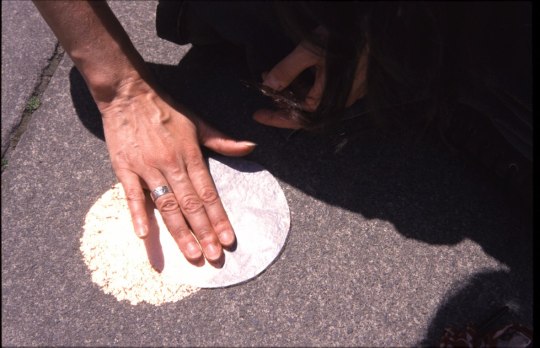


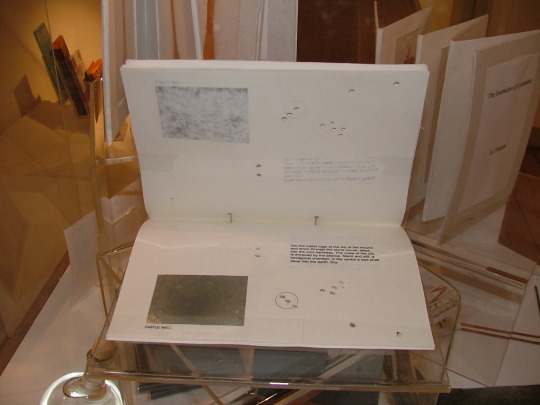


In Rising Water I located the wells and springs in the contemporary city drawing attention to them and developing the questions they raise about our relationships with water. I gilded the locations with a circle of copper leaf and produced etched maps that draw on the watery nature of city together with a handmade book to walk with.
The individual and joint histories of the wells and springs in Oxford reveal abattoirs and breweries; lepers and the mystical as well as sites of miracles and healing.
The project started by finding a small map revealing a large number of wells and springs across Oxford in R C Hope’s 'The Legendary Lore of the Holy Wells of England' published in 1894. Reading this map and drawing on a range of other sources from conversations, following old roads and many books and maps I walked through the city seeking these often lost sources of water. In the summer of 2004 during OOMF, a water festival in Oxford I invited people to a discussion in the Waterman Arms, Osney where we talked about the nature of wells and possible locations of rising water in Oxford. During my research I met, walked with and learnt from many interesting people from James Rattue author of The Living Stream to James Attlee author of Isolarian, a journey through Cowley Road, Oxford. The chapter Returning to Source includes a discussion on this project.
The project was funded by Artplus.
For the original map of Oxford Wells and Springs p.119
https://archive.org/details/legendaryloreofh00hope/page/n17/mode/2up
0 notes
Photo

Walking through the intersections of two periods of abrubt climate change at Hawsker. 183ma and now.
0 notes
Text
Walking through intersections of time
Holding a piece of jet as I walked I tried to comprehend the intersections of two periods of abrubt climate change at Hawsker. 183ma and now.
Travelling along the coastal footpath from Robin Hood’s Bay to Whitby, Yorkshire.
Jet is fossilised Monkey Puzzle trees. An ancient species that grew in Whitby when it was closer to the equator about 183 million years ago, pieces were mined and washed up on the coast here. It is also became a mourning stone in Victorian times.
The lady in the Jet Shop said the Victoria Hotel will go first and then Rocket Field. Informed by a presentation by Dr Anthony Cohen at the Geological Society, London where a photograph was shown of the cliff at Hawsker. The cliffside was drilled revealing evidence of earlier abrubt climate change (183ma). When asked if they were concerned about the holes in the rock face he explained that erosion is so fast here that it isn’t really a problem as the whole cliff face is being eroded.
I photographed the surfaces, examining the changing textures as I walked.
Between high tides, in sunshine and April showers. April 2011
0 notes
Photo

Copper leaf gilded on the surface of the hand rail in the gallery upstairs in Ovada that looks over Gloucester Green Bus Station.
The Gift, Ovada, Oxford 2007 with TIE (The Ideas Exchange) Curator Astrid Bowron.
I was fascinated by the people coming and going at the bus station in particular by the marks of hands touching the railings as people waited. The anticipation of journeys and waiting for the arrival of others seemed etched through touch into the railings.
0 notes
Text
Gloucester Green Bus Station
PLACES OF LEAVING AND ARRIVING
of connection, waiting and dreaming
BUCHANAN STN
MARKET GATES EAST SIDE
FRESHNEY
GEORGE ST O/S YPI BUILDING
FARRALINE PARK
OLD CATTLE MARKET
HOLLY WALK, HAMILTON TERRACE
DYER ST
ST MARGARETS BUS STATION
BUTE ST
BUS STATION O/S TERMINAL
ST JAMES BOULEVARD
MANOR ROAD
SURREY ST
BROAD MARSH BUS STATION
LEONARD ST
QUEENSGATE
BRETONSIDE
DOLPHIN CENTRE
THE HARD INTERCHANGE
MAES
HARBOUR PARADE
PROMENADE, BUS LAYBY NEAR SEA LIFE CENTRE
O/S RAIL STN
INTERCHANGE
RAVEN MEADOW
HARBOUR PARADE
EAST BANK PIER
GUILD ST
BRIDGE STREET
GARTH ROAD
INTERCHANGE
CHURCHILL WAY
DUKE ST
OPP. VISITORS CENTRE
MANVERS ST TALBOT ROAD
DENISON ROAD/PRIORY ROAD
MOOR LANE
TRAVEL INTERCHANGE
POOL VALLEY
PARKSIDE MARLBOROUGH ST
BUS STATION LONSDALE ST
BEETWELL ST
FEETHAMS OPP. TOWN HALL
FULL ST
FRENCHGATE INTERCHANGE
BLEU ST STAND 2
SEAGATE
SOUTH TERMINAL
BELL MEADOW RD
Found poem from a National Express Timetable timetable.
The bus station names vary from the dry functional interchanges to the reminders of the once rural often damper edges that have moved to centre.
0 notes
Text
Solar Noon Shadows
Gilding the shadow of small plants growing through tarmac at solar noon each day for a two week period at midsummer. Dandelion, Buttercup, Herb Robert, Yarrow, Ribwort Plantain, Clover, Barley Wheat, Wild Carrot, Cow Parsley.
Each day at solar noon (weather allowing) I gilded the shape of a shadow of a small plant with gold leaf at the point where the sun is most directly above the weeds growing in tarmac.
As this series of gestures developed there was a ritual of keeping an eye on the weather. Each day selecting a different sort of plant in the area. Observing the quality of the shadows. Being ready to mark a shadow in the minute or so of bright light at solar noon, if it occurred. The marks are still in place. The plants have grown or been weeded and the days have shortened and are lengthening again.
This artwork was part of Cultivation Field conceived and curated by Kate Corder. The exhibition was across two venues openhand openspace and jelly.
2012
0 notes
Text
The Norway Maple
There were regulars that sat on the wall and under the tree. One summer’s day rain fell, straight down, leaving a dry circular area beneath its canopy. People paused in the dry.
The Norway Maple could be seen from my studio overlooking this old part of Reading. It was a perfect spot to watch the tree and the life in and around it.
I took polaroids photos that became a short animation of the life to the tree. Other gestures included a Soft Boundary, a 7m long cushion placed on the wall to sit on, pasting a large print of the tree in flower on a shop hoarding and dowsing and marking the edges of the tree energy that stretched into the studio.
2007-2010
#polaroid
#norway maple
#St Marys Minster
#dowsing
0 notes
Photo
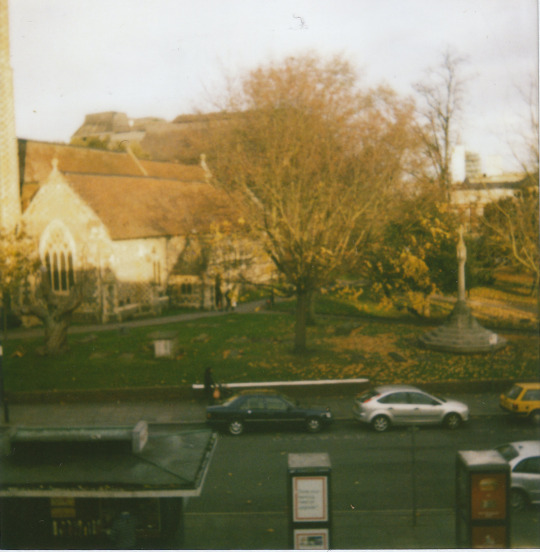
The long cushions was rolled out, an invitation to sit and pause under the Norway Maple.
0 notes
Photo

Memories of watching the Norway Maple from my old studio in Reading. The masking tape curve marks the outer energy of this magnificent tree.
0 notes




